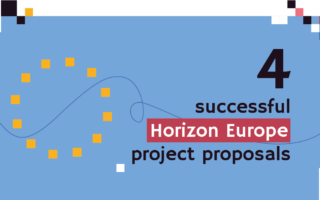What's
Twitter – A communication tool for researchers
Nobody will help us promote our research results unless we do it ourselves.
Altmetrics or alternative metrics are aiming to come up with better dissemination measurements of research to the general public. They do so by using different parameters that they track. Twitter is one of the main parameters tracked. You can read more about Altmetrics here.
Regardless of the alternative metrics, the authors of this paper found that the citation rate of articles promoted via Twitter was higher than without this communication. How did they proceed?
- They divided 112 articles 1:1 between the control group and the articles promoted on Twitter.
- The aim was to have the groups evenly balanced, with some types of articles excluded (e.g.: survey papers).
- Each promoted article was tweeted once by a designated member of TSSMN (The Thoracic Surgery Social Media Network) and was subsequently shared by 11 delegates (52,896 followers in total). The article was then tracked for one year.
- The citation rate for tweeted articles was +3.1±2.4 and for untweeted articles was +0.7±1.3
According to another article, Twitter also helps to build professional communities. It takes advantage of filter bubbles, which are a negative feature of social networking in other circumstances. Interesting impacts include creation of communication channels at conferences, where researchers who are directly involved in the conference are able to join discussions.
Early career researchers are able to integrate faster into the scientific community. Whereas established researchers are able to disseminate their results more quickly and possibly find new possible collaborations.
Communicating one’s own research on social networks among researchers also has the advantage of quick feedback on specific research ideas and results.
However, due to the filter bubbles, there should not be high expectations that the promoted research information will easily reach the wider public. If researchers systematically work on their audience, their followers are usually also from academia.
LinkedIn vs. Twitter
The Aalborg University‘s podcasts pointed out that Twitter is good for disseminating research, new project opportunities and keeping up to date with latest news from your research area. It is recommended to communicate in English as the global language for science.
In comparison, LinkedIn was considered by a number of researchers as a tool suitable for establishing collaborations for industry research projects. English is appropriate for communication, but it is common (sometimes even recommended) to communicate in the national language. This is due to the different composition of the audience, communication style and goals we set for these social networks.
How to use Twitter as a researcher?
Networking
We need to choose well who to follow (researchers, conferences, journals) in the areas that interest us. For better reach, it is also a good idea to connect with colleagues in your workplace. Members of project consortia are also of interest. Even when the project is over, you can continue to follow each other and will probably remain close to each other research-wise to some extent.
To build a network of followers, it is beneficial to interact with “influencers” in your field (likes, retweets, comments) with sensible mentions of your own research. It also helps to mention (“tag”) the organizations involved in the research in question.
Research Promotion
Social networks never display published content to all of our followers. Therefore, some of the simplest activities include repurposing existing content in a modified format to extend reach.
Other recommended activities that can increase the reach of posts include:
- Tagging people and organizations that are associated with the research results.
- Consider using hashtags. However, there is no need to slip into using generic ones (#research). It is better to use specific hashtags (#disinformation) or to google the hashtag trend for the specific field and choose the ones that are closest to our needs.
- If we are selecting a journal to submit an article to, one helpful criterion could be whether the journal actively promotes new articles on their Twitter account. This is a useful decision criterion if we are considering qualitatively similar journals.
- Submissions should include the DOI for the article; graphic visuals will attract people’s attention better.
- For a more advanced approach, we may consider a convenient time to tweet (e.g., Wednesday at 10:00 a.m. according to a recent research).
- It is sensible to have separate professional and private accounts.
Communication on social networks is not solely about generating new content. It is valuable to interact with other posts or share interesting information that was created by someone else. In that case, it is necessary to give credit to the information source, it might even bring the author’s attention to your post and start a discussion.
How much time should be spent promoting your research on social media?
Opinions vary. Some resources state a minimum of five tweets a day is necessary, others don’t even come close to that number. The optimal way is to find a regular time (it doesn’t have to be every day) to dedicate to this activity. It is important to remember that if we don’t promote our research, someone else most probably won’t do it either.


